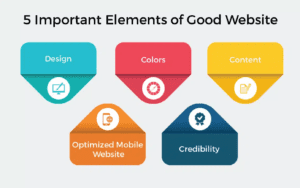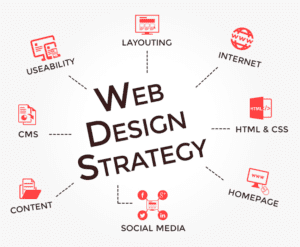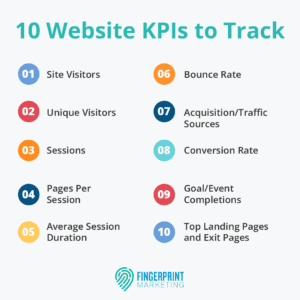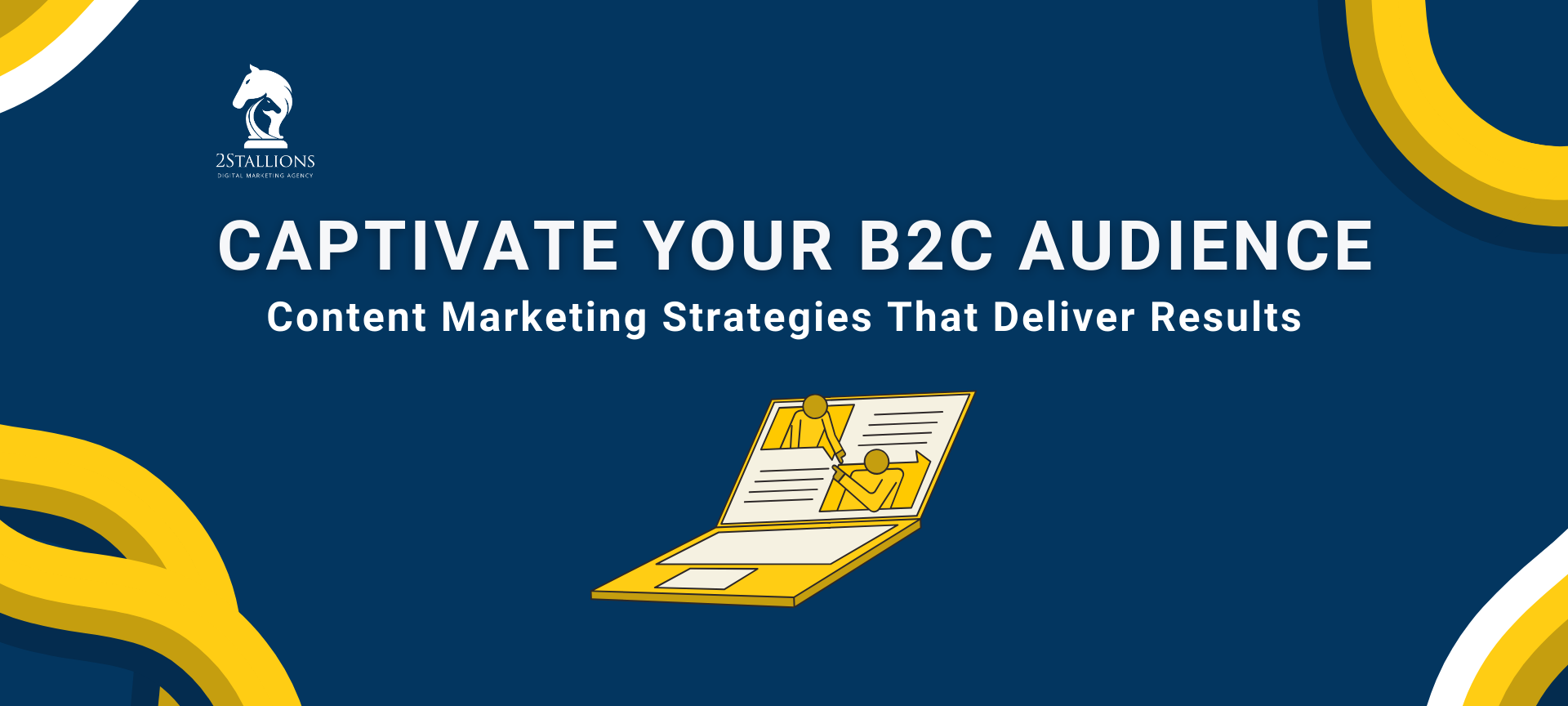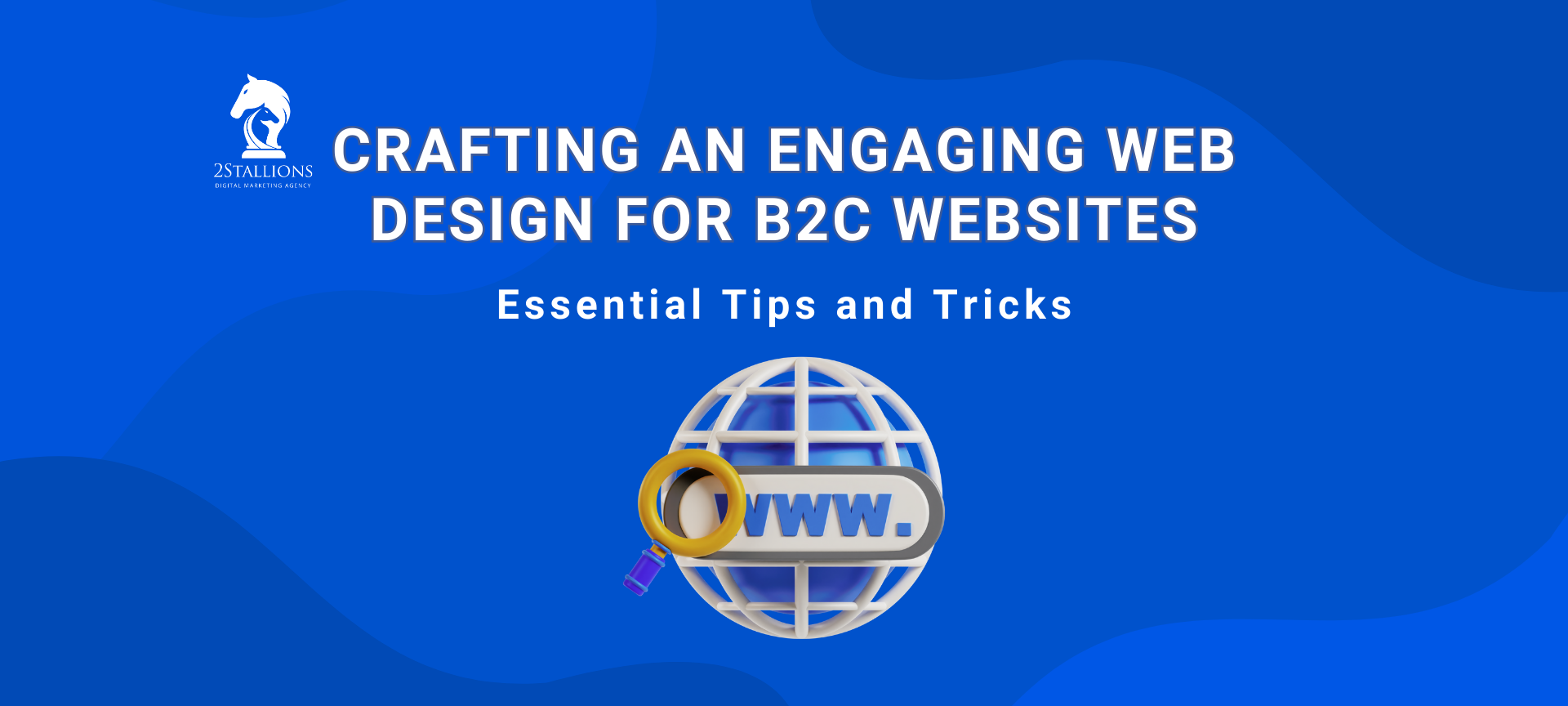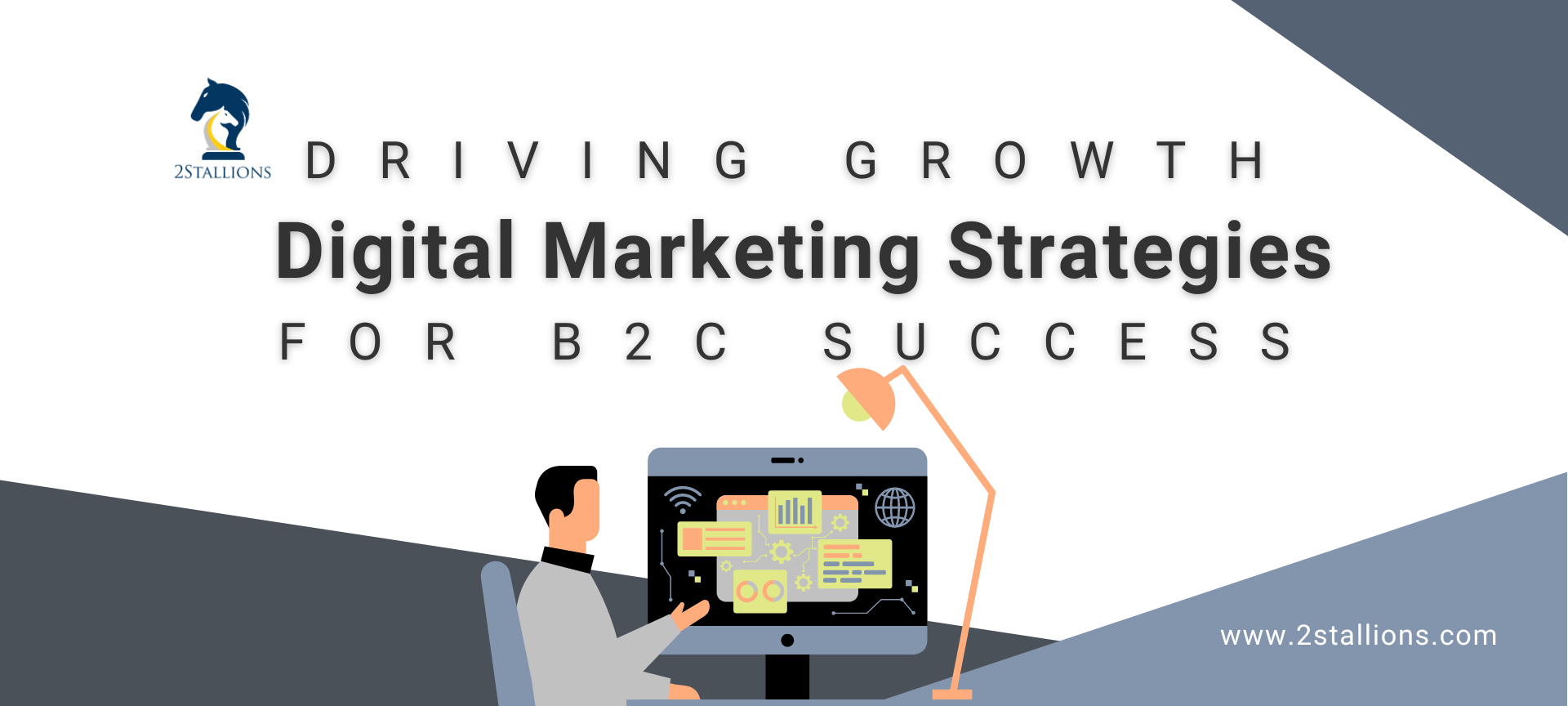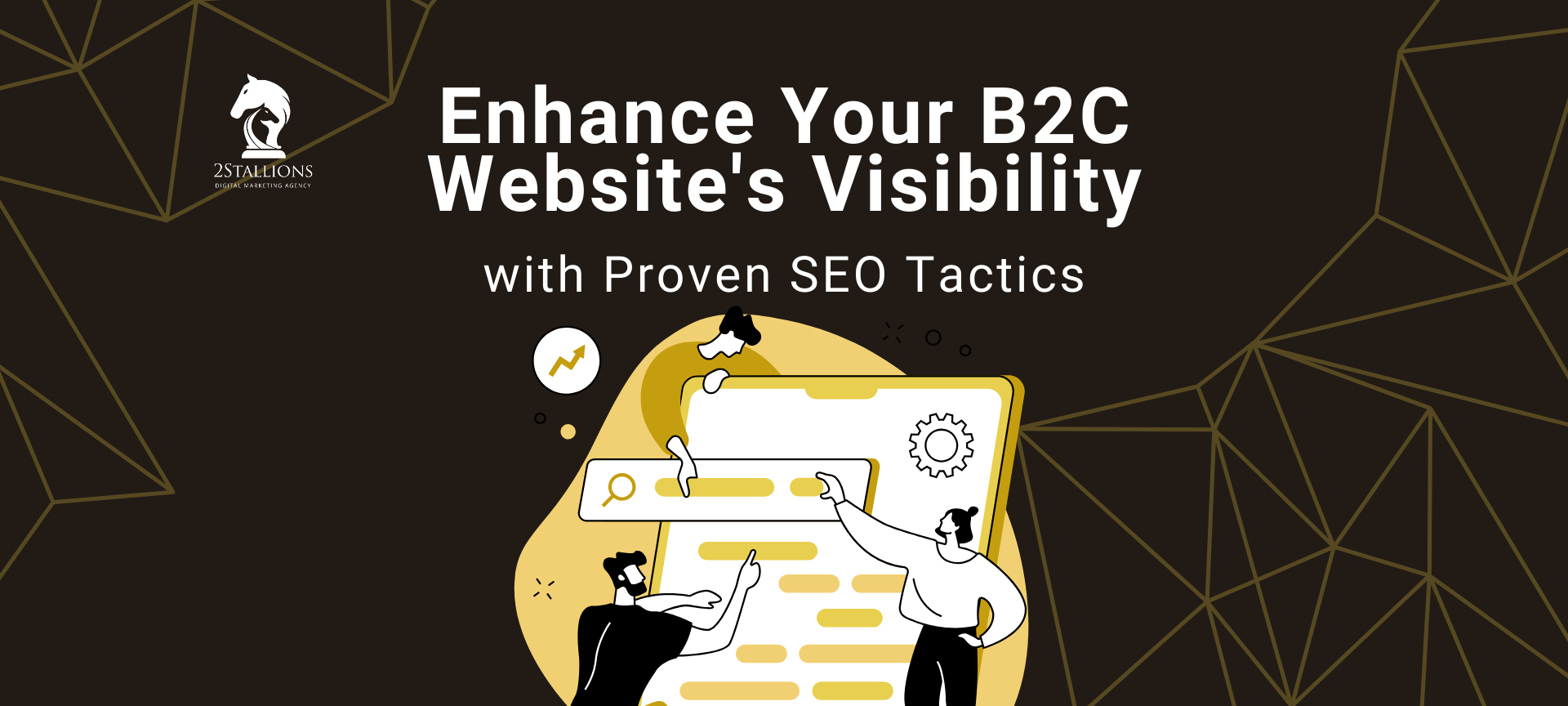SHARE
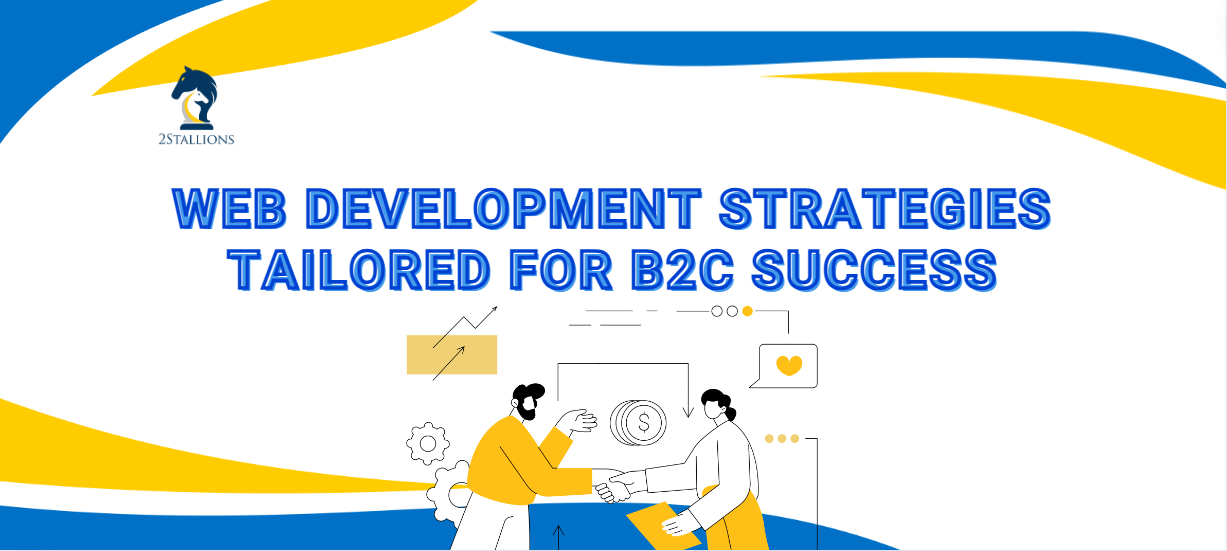
In the ever-evolving world of online commerce, businesses must have effective web development strategies tailored for business-to-consumer (B2C) success. Understanding the B2C landscape is the first step towards creating a website that meets the needs and expectations of consumers. This article will explore the key elements of successful B2C web development, provide insights into implementing effective strategies, and discuss how to measure the success of your efforts.
.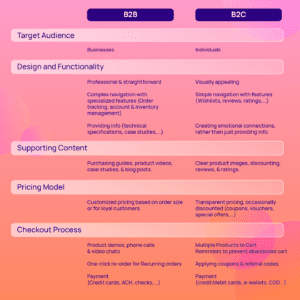
(Source: Lollypop Design )
Understanding the B2C Landscape
One of the most important factors is the customer-centric approach in B2C web development. Unlike business-to-business (B2B) transactions, B2C interactions are primarily driven by consumers’ emotions and desires. Therefore, it is essential to design websites that capture the attention and engage with customers personally.
Delving deeper into the realm of B2C web development unveils a fascinating interplay of psychology and design. The layout, colour scheme, and even the font choice on a website can evoke specific emotions and influence consumer behaviour. Understanding these nuances allows web developers to craft digital experiences that resonate with their target audience on a subconscious level.
The Importance of Customer-Centric Web Development
A customer-centric website creates a seamless user experience by providing relevant and tailored content. This includes understanding the target audience and catering to their needs and preferences. When consumers feel valued and understood, they are more likely to trust and remain loyal to a brand.
In the competitive landscape of B2C e-commerce, where choices abound and attention spans are fleeting, a customer-centric approach can be the key differentiator. By anticipating consumer needs and delivering a personalised online journey, businesses can forge lasting connections with their customers, fostering brand advocacy and repeat purchases.
Key Differences between B2B and B2C Web Development
Some differences should be considered while B2B and B2C web development share similarities. B2C websites typically prioritise visual appeal, ease of use, and quick access to information. In contrast, B2B websites often prioritise detailed product information, case studies, and a professional tone. Understanding these discrepancies is vital to ensure your web development strategy sympathises with the target audience’s expectations.
Moreover, the decision-making process in B2C transactions is often more impulsive and emotion-driven, unlike the rational, multi-stakeholder process in B2B transactions. This fundamental variance underscores the need for B2C websites to create a captivating online environment that resonates with consumers’ emotions and prompts them to take immediate action.
( Source: Addin Digital )
Essential Elements of a Successful B2C Website
Creating a successful B2C website involves incorporating several essential elements that enhance user experience and drive conversion rates. Let’s explore three crucial aspects:
The Role of User-Friendly Design
Creating a visually appealing and intuitive website design is crucial for capturing and retaining consumers’ attention. A user-friendly interface includes easy navigation, clear calls to action, and a visually appealing layout and imagery. Prioritising user experience can result in higher engagement and conversion rates.
Furthermore, when designing a user-friendly website, it is essential to consider accessibility for all users, including those with disabilities. Implementing features such as alt text for images, keyboard navigation, and clear headings can make your website more inclusive and user-friendly, ensuring a positive experience for all visitors.
Importance of Mobile Optimisation
In the era of smartphones and tablets, you should optimise your website for mobile devices. Mobile-friendly websites not only provide a better user experience for on-the-go consumers, but they also improve search engine rankings. Ensuring responsive design and fast loading times can reach a broader audience and increase conversions.
Moreover, mobile optimisation goes beyond just responsive design; considering factors such as touch-friendly buttons, simplified forms for mobile users, and location-based services can further enhance the user experience. By tailoring your website to meet the specific needs of mobile users, you can stay ahead in the competitive B2C market.
The Power of Persuasive Content
Compelling and persuasive content has the potential to influence consumer behaviour and drive sales. High-quality product descriptions, customer testimonials, and engaging storytelling can create emotional connections and build trust. By using persuasive content, you can inspire consumers to take action and make purchases, ultimately leading to increased B2C success.
Additionally, incorporating user-generated content such as reviews, ratings, and social media posts can further enhance the persuasive power of your website. User-generated content adds authenticity and social proof, reassuring potential customers and influencing their purchasing decisions. By leveraging the power of user-generated content alongside your persuasive copy, you can create a compelling narrative that resonates with your target audience.
Implementing Effective Web Development Strategies
Once the essential elements of a B2C website are understood, it is crucial to implement effective strategies to maximise your chances of success. Let’s explore three strategies that can help drive B2C success:
Prioritising Website Speed and Performance
In today’s fast-paced digital world, consumers expect websites to load quickly and perform seamlessly. Slow-loading pages and technical glitches can lead to frustration and abandonment. Prioritising website speed and performance can ensure a positive user experience and increase conversion rates.
Leveraging SEO for B2C Success
Search engine optimisation (SEO) drives organic traffic to your B2C website. By optimising your website’s content, meta tags, and keywords, you can improve your search engine rankings and increase visibility to potential customers. A sound SEO strategy can help your website reach the right audience and lead to increased conversions.
Harnessing the Potential of Social Media Integration
In today’s digital age, social media platforms provide a powerful opportunity to connect with consumers personally. Integrating social media into your B2C website can encourage sharing, engage with customers, and build a loyal community. Social media integration can amplify your brand’s reach and drive B2C success.
While it’s about loading times when prioritising website speed and performance, factors such as server response times, image optimisation, and efficient coding practices all play a crucial role in enhancing the overall performance of your website. Businesses can begin investing in a content delivery network (CDN) to help distribute website content over several servers worldwide, lowering latency and improving user loading times in various geographic zones.
Furthermore, leveraging SEO for B2C success involves more than just keyword research and on-page optimisation. Off-page SEO strategies such as link building, influencer partnerships, and social bookmarking can also improve your website’s authority and credibility in the eyes of search engines. By diversifying your SEO efforts and staying up-to-date with the latest algorithm changes, you can stay ahead of the competition and attract a steady stream of organic traffic to your B2C website.
( Source: Fingerprint Marketing )
Measuring the Success of Your B2C Web Development Strategy
After implementing your web development strategies, you must measure their effectiveness and make data-driven decisions for continuous improvement. Let’s explore two key measurement methods:
Key Performance Indicators for B2C Websites
Identifying and tracking key performance indicators (KPIs) is essential for evaluating the success of your B2C website. Examples of valuable KPIs include conversion rates, bounce rates, average session duration, and customer lifetime value. You can gain insights into your website’s performance and make informed optimisation decisions by regularly monitoring these metrics.
Utilising Web Analytics for Continuous Improvement
Web analytics tools like Google Analytics, provide invaluable insights into user behaviour and website performance. Analysing data on user demographics, behaviour flow, and page interaction allows you to identify areas for improvement and enhance user experience. By continually analysing and refining your website based on web analytics findings, you can remain competitive in the B2C landscape.
The Role of Customer Feedback in Web Development
Customer feedback plays a crucial role in shaping the success of your B2C web development strategy. It directs communication with your target audience, allowing you to understand their needs and preferences. Encouraging customer reviews, satisfaction surveys, and collecting feedback through various channels gains valuable insights into consumer preferences and make the necessary adjustments.
By listening to your customers, you can create a website that truly resonates with their needs and desires. Additionally, customer feedback can help you identify pain points and areas for improvement that may take time apparent through other measurement methods. It allows you to tailor your web development strategy to meet the specific demands of your target audience, ultimately leading to higher customer satisfaction and increased conversions.
In conclusion, developing successful web strategies tailored for B2C success requires understanding the B2C landscape and crucial element integration such as user-friendly design, mobile optimisation, and persuasive content. Effective implementation of strategies like prioritising website speed and performance, harnessing SEO, and leveraging social media integration can further enhance B2C success.
By measuring the success of your efforts through key performance indicators and utilising web analytics, you can continuously refine your strategy and ultimately create a website that delights and converts consumers. Additionally, customer feedback should be valued to make informed decisions for continuous improvement. By following these strategies, businesses can create B2C websites that resonate with their target audience and drive success in the competitive online marketplace.
Remember, the digital landscape is ever-evolving, and staying ahead of the curve requires constant adaptation and improvement. By embracing measurement methods, such as KPI tracking, web analytics, and customer feedback, you can ensure that your B2C web development strategy remains effective and relevant in an ever-changing online world.
Frequently Asked Questions About Web Development Strategies Tailored for B2C Success
What are key web development strategies for B2C success?
Essential strategies include optimising website speed and mobile responsiveness, implementing user-friendly navigation, personalising user experiences, and incorporating strong calls to action to drive conversions.
How can personalisation enhance a B2C website?
Personalisation can enhance a B2C website by delivering content, offers, and recommendations based on individual user behaviours, preferences, and past interactions, significantly improving engagement and customer satisfaction.
What role does mobile responsiveness play in B2C web development?
Mobile responsiveness is crucial as it ensures the website provides a seamless experience across all devices, particularly smartphones, where consumers browse and shop, thereby increasing accessibility and potential sales.
How can B2C businesses improve their website's conversion rates?
B2C businesses can improve their website’s conversion rates by using A/B testing to fine-tune elements like page layout, product descriptions, and checkout processes. This ensures that each component is optimised to encourage purchasing decisions.


